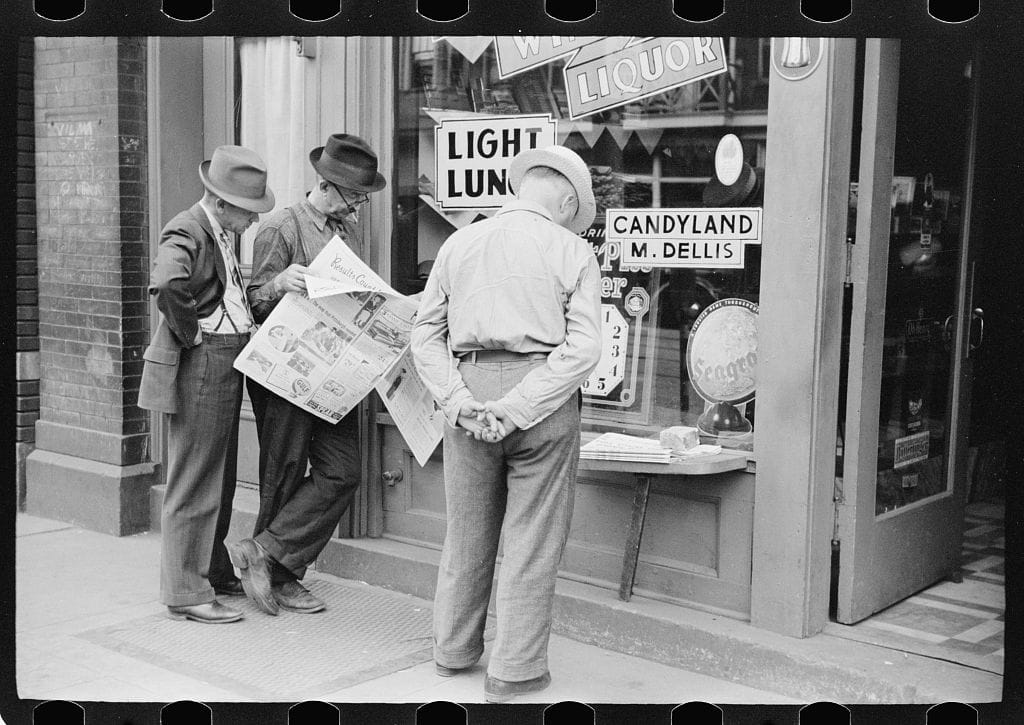Finding ways for local news to thrive

Sarah Stonbely is director of the State of Local News Project at the Medill School of Journalism, Northwestern University. She oversees Medill’s research on the spread of local news deserts and solutions to the crisis. Before her work for the State of Local News Project, she was the research director for the Center for Cooperate Media at Montclair State University in Montclair, New Jersey. Stonbely recently spoke with American Habits senior editor Ray Nothstine.
Tell us a little bit about the State of Local News Project in the Medill School of Journalism at Northwestern University. What excites you about the mission and the work they are doing?
The State of Local News Project is based on Penny Abernathy’s work mapping the local news landscape and analyzing changes to the business of local news. Our cornerstone project is the annual report — the 2023 report was released in November — and it’s based on our database of local newspapers, digital outlets, ethnic media, and public broadcasting serving the 3,143 counties that make up the U.S.
I have always been interested in how news can create community and also division, and I was lucky (if you can call it that!) to begin researching local news when I did, at an incredibly dynamic and disruptive time for the industry. Before coming to Northwestern, I was the research director at the Center for Cooperative Media, which studies and supports local journalism at the state level.
We hear a lot about “preserving democracy” today and related to that – preserving our capacity to be a self-governing people. Why are news organizations so integral to promoting and preserving those traditional American principles?
News organizations have always been the glue that binds communities together, going back to Alexander Hamilton and Alexis de Tocqueville. Communities with robust local journalism are more engaged, have less corruption, and are more likely to have the information they need in times of crisis. And we know from contemporary research the many ill effects that result when a town loses its local news outlet – largely the converse of what I just described: lower engagement, more corruption, etcetera.
When I was working at a state policy organization, we did a lot of work on trying to prevent ballot-roll-off. This is of course the trend of people voting and only filling out the top lines of their ballots like a presidential race. More and more segments of the news we consume is nationalized and that inevitably becomes the focus of the public. Likewise, the dominant and flourishing news areas are generally in big urban areas. What are a few of the consequences of this trend that might not be readily apparent to everyday Americans?
When local news disappears, people will search for news elsewhere, and inevitably find national news, which is more polarized and partisan than local. This is not to say that local politics are immune from polarization, but without local journalists to bring the temperature down and act as a forum for local views, it becomes a self-reinforcing spiral.

Is there a link between the loss of local news and political corruption or even things like higher taxes or municipal fees? I heard somebody recently say that when local newspapers die, property taxes often go up. Any truth to not just corruption rising – but also those kinds of pocketbook issues like higher local fees or taxes?
In part because of Penny’s work, in part because the crisis has become acute, scholars across multiple disciplines have taken notice and conducted excellent research on the value of local news and what happens when it disappears. In addition to the research listed here, work is being published all the time to show the value of local news.
Media, like a lot of other institutions today, have lost large swaths of the public trust. Broadly speaking—what are some of the things that can be done to restore some transparency and public trust in the media today?
It’s not an easy answer because there are many different facets of the public that have lost trust in news, and for each the solution is different. Broadly, journalists are beginning to look at their audiences—their communities—as collaborators rather than an audience to be spoken to in a one-way conversation. This will go a long way toward building back trust.
I know this is probably a complex question, but what do you think are some of the best ways to resolve news deserts and revive local journalism?
It’s going to be a combination of things resulting in a flexible business model that will make the most of each outlet’s community’s strengths. But we’ve found that there are a handful of essential variables that contribute to the success and sustainability of a local outlet: the relative wealth of the audience, which translates into ability to fund an outlet through reader revenue; the size and population density of the audience, which allows a local outlet to reach a critical mass of people as well as take advantage of network effects from other local institutions; and the presence of a local retail base that wants to reach the audience through advertising. There are other factors too: the availability and adoption of quality broadband, and the presence of local philanthropy. Some combination of these has to be present in order for a local news outlet to survive and thrive. And this is why we are increasingly a country of journalism haves and have-nots.
Given all we’ve heard about how the economics just aren’t there to support most local news operations anymore, are there any trends running the other way that might make local news more financially viable in the future?
One of the drivers of the closure of local outlets in the last several years, especially among ethnic outlets and those that still rely on print (which is many of them) has been the closure of small businesses, so to the extent that the economy recovers and these small businesses can thrive, that’s good for local journalism. And the same goes for money in people’s wallets; if people feel solid financially they will be more likely to give or subscribe to local news outlets.
Can you offer a few recent examples of local innovation when it comes to reporting or inspiring storytelling that is making a difference in communities and benefiting the people there?
One of the new features in this year’s report was our map of Bright Spots, for which we featured 17 outlets across the country that have promising business models. These outlets are all doing different and innovative things to reach and serve their audiences, and it’s a mix of large and small outlets, legacy and digital, in small towns and urban areas. So there are ways forward, and we’re figuring it out, it’s just not happening quickly enough.



